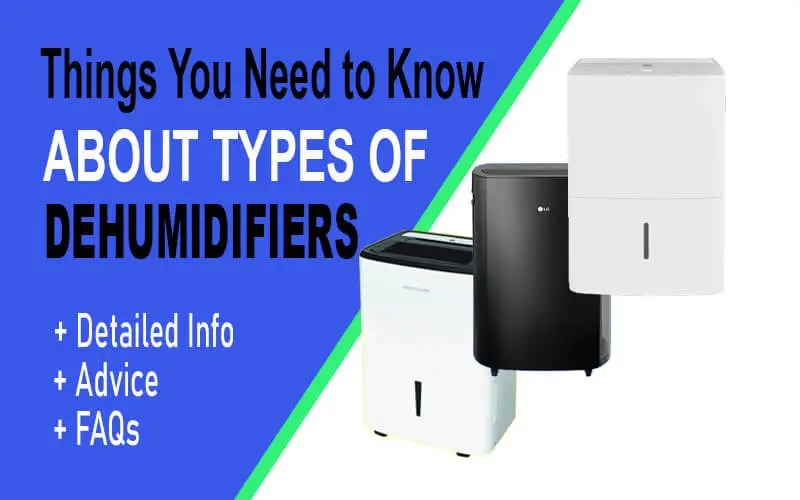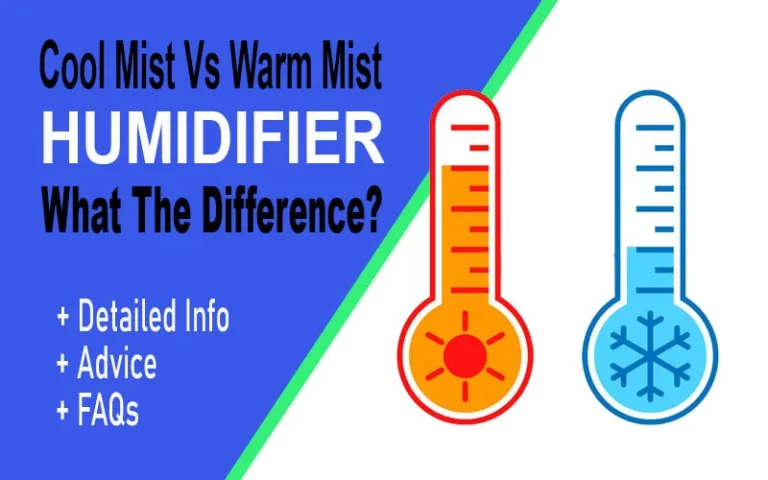Things You Need to Know about Types Of Dehumidifiers [2023]
If you live in a humid environment, you know its tough and uncomfortable to breath in humid environment. The air is thick and sticky, and it feels like you can’t get away from the humidity. I was facing the same issue of humid environment. I want to buy the dehumidifier for my home. But I was confused about the types of dehumidifiers. In market, I did research and found all the types of dehumidifiers. Today I will share these all data about types and will also compare them to give best knowledge to my online friends so you could learn the basics before deciding the best choice for you.
First I want to tell you about dehumidifiers, what they are actually. A dehumidifier is a gadget that is utilized to eliminate overabundance dampness from the air. This can be useful in diminishing the gamble of shape and buildup development, as well as lessening the general stickiness level in your home.
Dehumidifiers can be used in both residential and commercial settings and come in a variety of sizes to suit your needs. In this article, we will talk about the various kinds of dehumidifiers accessible and their advantages and downsides.
What are the Types of dehumidifiers?
Dehumidifiers are gadgets that assist to eliminate overabundance dampness from the air. There are two principal kinds of dehumidifiers:
- Refrigerant Dehumidifier
- Desiccant Dehumidifier
Refrigerant Dehumidifier
Refrigerant dehumidifiers are a profoundly compelling and energy-proficient strategy for dampness control. Using a refrigeration system to remove water vapor from the air, they can effectively lower the humidity level in a space while also providing a cooling effect. This makes them ideal for use in a large number of utilizations, from modern and business settings to private homes.
Refrigerant dehumidifiers work by disregarding air a virus curl, which makes the water fume in the air consolidate. The dense water is then gathered in a repository, leaving the air dry and agreeable. Because they do not use chemicals or other agents to remove moisture from the air, they are safe for people and animals.
A dehumidifier enjoys a few settled health advantages. A dehumidifier can assist with working on your respiratory wellbeing by lessening how much residue and shape in the air. This could be quite helpful for those who experience the bad effects of allergies or asthma.
Dehumidifiers can likewise assist with diminishing the gamble of fostering respiratory contamination and lessen the seriousness of side effects in the event that you really do become ill. If you live in an area with high humidity, a dehumidifier can also help to reduce the risk of condensation and mold growth in your home.
Overall, a dehumidifier can positively impact your health, both in the short and long term. The appliance works by removing moisture from the air, which can reduce the amount of mold and bacteria in the environment. This can help improve air quality and make breathing easier for people. Moreover, a dehumidifier can assist with decreasing residue parasites, a typical trigger for sensitivities.
Desiccant Dehumidifier
A desiccant dehumidifier is an instrument that is utilized to remove dampness from the air. This is finished by going air through a turning desiccant wheel. The desiccant material on the wheel absorbs the moisture from the air, and the dry air is then passed through a heating element to remove the moisture from the desiccant material.
Desiccant dehumidifiers work by going air through a pivoting desiccant wheel to separate dampness from the air. The desiccant material on the wheel assimilates the water fume from the air, and the dry air is then smothered into the room.
Desiccant dehumidifiers are very effective at removing moisture from the air, and they can be used in both residential and commercial settings. They are often used in basements, crawl spaces, and other areas where moisture is a problem.
One example of a desiccant dehumidifier is silica gel. Silica gel is a permeable material that can retain a lot of water fumes. Silica gel is often used in packaging to help keep products dry. Silica gel is a desiccant that is often used in desiccant dehumidifiers.
It is a white, porous, absorbent material that can absorb moisture from the air. Silica gel is non-poisonous and can be reused after it has been dried out.
Desiccant dehumidifiers are materials that are utilized to eliminate water fumes from the air. The most common example of a desiccant dehumidifier is activated charcoal. Activated charcoal is a kind of carbon that has been treated with oxygen to open up its pores. This expands its surface region and makes it more compelling at engrossing water fumes. Activated charcoal can be reused many times before it needs to be replaced.
Which is Better Dehumidifier? Desiccant or Refrigerant
There are a couple of key variables to consider while concluding which kind of dehumidifier is best for your necessities.
A refrigerant-based dehumidifier might be the better choice in the event that you are worried about energy proficiency. These units are more practical to work at high temperatures and high dampness levels.
However, a desiccant dehumidifier may be a better choice if you need to remove large amounts of moisture from the air. These units are more compelling at eliminating dampness, however they can be more costly to work.
Comparison: Refrigerant Dehumidifier Vs Desiccant Dehumidifier:
1. Extraction Rates
A refrigerant dehumidifier is a gadget that can eliminate up to 200 pints of water from the air each day. This process is achieved by using a refrigerant to cool the air, which causes the water to condense and be collected. Refrigerant dehumidifiers are much of the time utilized in homes and organizations to assist with controlling moistness levels and forestall shape and buildup development.
Extraction rates of desiccant dehumidifiers are typically 6 to 7 liters per day. This implies that the dehumidifier can eliminate up to 7 liters of water from the air everyday. The amount of water that can be removed will depend on a number of factors, such as the air’s humidity level and the room’s size.
2. Noise
The noise level of a refrigerant dehumidifier can range from 60 to 65 decibels. This noise level can be affected by a number of factors, such as the size and model of the dehumidifier, the type of refrigerant used, and the surrounding environment. In general, however, refrigerant dehumidifiers tend to be relatively quiet compared to other types of dehumidifiers.
Desiccant dehumidifiers are unique in that they can operate at very low noise levels. Desiccant dehumidifiers have an uproar level that can be as low as 35 db. This is fundamentally lower than different sorts of dehumidifiers, making them ideal for use in commotion touchy conditions.
Conclusion:
Dehumidifiers come in two different categories. The best types of dehumidifiers for your needs must be chosen according to your needs and demands because each type has advantages and disadvantages. Refrigerant dehumidifiers are more affordable and easier to maintain, but they’re not as effective in extremely cold or humid environments.
Desiccant dehumidifiers are more expensive but can be used in a wider range of conditions. The type of dehumidifier that will work best for you ultimately depends on your individual requirements.
If you think there are other types of dehumidifiers in the market, do let me know by commenting below or inbox me. I usually reply in 12 hours as I check my mail box twice a day.


![9 Sure Fire Benefits Of A Backup Generators [Savvy|Smart] 2023](https://prohouseideas.com/wp-content/uploads/2022/11/benefits-of-a-backup-generator-768x480.webp)


![Conclusive – When To Use A Dehumidifier? [+Advice] 2023](https://prohouseideas.com/wp-content/uploads/2022/07/when-to-use-a-dehumidifier-768x480.webp)
![How to Transport a Generator the Right Way? [+Safely] 2023](https://prohouseideas.com/wp-content/uploads/2022/09/how-to-transport-a-generator-768x480.webp)
![How to Dehumidify a Room Quickly, Naturally and Fast [2023]](https://prohouseideas.com/wp-content/uploads/2023/01/how-to-dehumidify-a-room-768x480.webp)